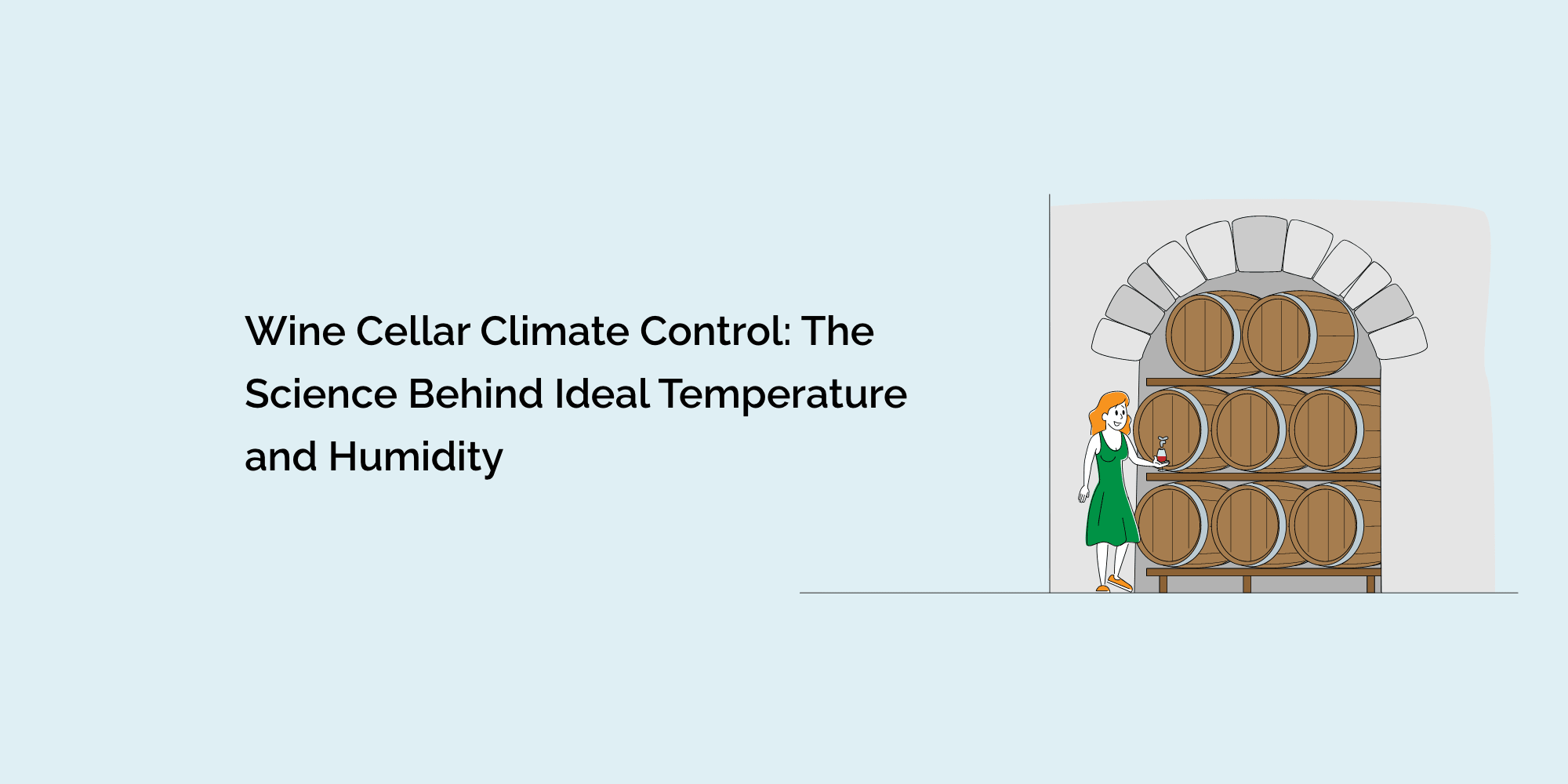Wine has been enjoyed for thousands of years, and throughout history, enthusiasts have sought ways to preserve and improve its taste and quality. One of the key factors that significantly impact wine preservation and aging is the wine cellar's climate. Proper temperature and humidity control are essential for creating an ideal environment where wines can age gracefully and develop their full potential. In this blog, we will explore the science behind wine cellar climate control, the importance of temperature and humidity, and how understanding these factors can lead to a perfect aging environment for your cherished wines.
The Impact of Climate on Wine Preservation:
Climate is a fundamental aspect of wine preservation, both for short-term storage and long-term aging. The conditions under which wine is stored directly affect its taste, aroma, and overall quality. Factors like temperature, humidity, light exposure, and air circulation all play crucial roles in the wine aging process. Among these, temperature and humidity are the most critical and deserve special attention in creating the perfect wine cellar.
Temperature: The Key to Wine Maturation:
-
The Science of Wine Aging: Temperature influences the chemical reactions that occur within wine as it ages. At higher temperatures, wine matures faster due to increased molecular movement, leading to faster oxidation and flavor development. Conversely, lower temperatures slow down aging processes, preserving fruitiness and acidity in young wines.
-
Optimal Aging Temperature: The ideal temperature range for wine aging is between 55°F to 59°F (12.8°C to 15°C) for red wines and 49°F to 55°F (9.4°C to 12.8°C) for white wines. Within this range, wines age gracefully, revealing complex flavors and aromas.
-
Avoiding Temperature Fluctuations: Consistency is vital in wine aging. Temperature fluctuations can cause wine faults, affecting the delicate balance of the aging process and potentially leading to spoilage.
- The Impact of Wine Varietals: Different wine varietals have unique aging requirements influenced by temperature. For example, red wines generally benefit from slightly higher temperatures than white wines, which prefer cooler conditions to preserve their freshness.
Humidity: Maintaining Cork Integrity and Wine Quality:
-
Cork Preservation: Humidity levels are essential for maintaining the integrity of wine corks. Proper humidity prevents corks from drying out and shrinking, keeping them tightly sealed and preventing oxygen from entering the bottle. This controlled oxidation contributes to the aging process, enhancing wine flavors.
-
Preventing Wine Evaporation: Humidity levels also impact the rate of wine evaporation from bottles. Optimal humidity prevents excessive evaporation, preserving the wine's volume and concentration.
-
The Ideal Humidity Range: Aim for humidity levels between 60% to 70% in the wine cellar to protect corks and avoid mold growth.
-
Avoiding Mold Formation: High humidity levels can lead to mold growth, which can damage wine labels and negatively affect wine quality.
- Consistent Aging Conditions: Maintaining stable humidity levels ensures consistent aging conditions for all wine bottles, preventing discrepancies in the maturation process.
The Role of Microclimates in Wine Cellars:
-
Microclimate Defined: Microclimates are localized climate conditions within a larger climate. In wine cellars, microclimates can occur due to differences in temperature and humidity in various parts of the cellar.
-
Understanding Microclimates: Some areas in the wine cellar may experience slightly different temperature and humidity levels due to factors such as proximity to cooling units, ventilation, and the cellar's layout. It is crucial to monitor and account for these microclimates to create a uniform aging environment.
-
Positioning of Wine Racks: Wine racks should be strategically placed to allow proper air circulation and avoid extreme temperature differences within the cellar.
- Usage of Cooling Units and Humidifiers: Cooling units and humidifiers help regulate temperature and humidity, minimizing the impact of microclimates.
Wine Cellar Insulation and Climate Control Systems:
-
Importance of Insulation: Proper insulation is essential for maintaining a stable and controlled climate within the wine cellar. Insulation prevents external temperature fluctuations from affecting the interior climate.
-
Climate Control Systems: Advanced climate control systems use temperature and humidity sensors to monitor cellar conditions continuously. These systems can adjust cooling and humidification as needed, maintaining a consistent environment for wine aging.
-
Smart Technology Integration: Some climate control systems integrate with smart technology, allowing wine enthusiasts to monitor and adjust cellar conditions remotely.
- Avoiding Vibrations: Vibration-free cellar cooling units are essential to prevent disturbing sediments in aging wines, especially in the case of bottle-fermented sparkling wines.
Air Circulation and Ventilation:
-
Proper Air Circulation: Adequate air circulation helps maintain consistent temperature and humidity levels throughout the wine cellar.
-
Avoiding Stale Air: Stale air can negatively impact wine aging. Proper ventilation ensures fresh air exchange, preventing musty odors and mold formation.
-
Passive Ventilation: Passive ventilation, such as vents or openings, allows for natural air exchange within the cellar.
- Active Ventilation: Active ventilation systems use fans or blowers to facilitate air circulation in the cellar, promoting uniform aging conditions.
Conclusion:
The art of wine cellar climate control combines scientific principles and passion for wine preservation. Temperature and humidity play integral roles in the aging process, impacting wine maturation, aroma, and taste. By understanding the science behind ideal temperature and humidity, wine enthusiasts can create the perfect aging environment for their cherished bottles. Implementing proper climate control systems, maintaining consistent conditions, and monitoring the cellar environment will ensure that each bottle of wine reaches its full potential, offering a symphony of flavors and aromas that can be savored and cherished for years to come.








